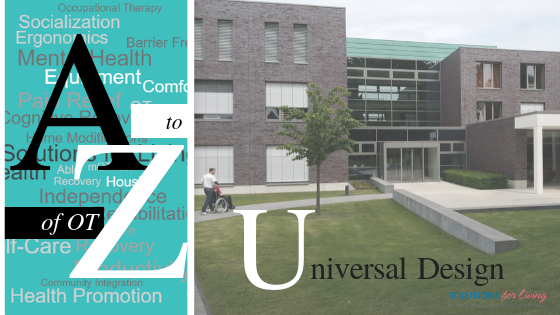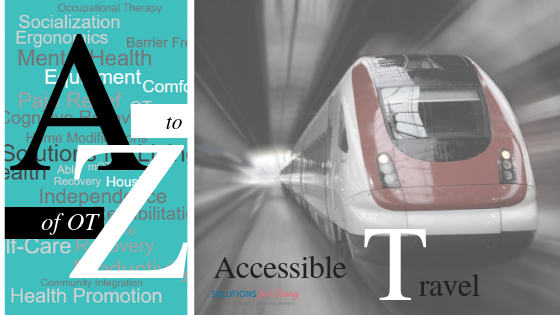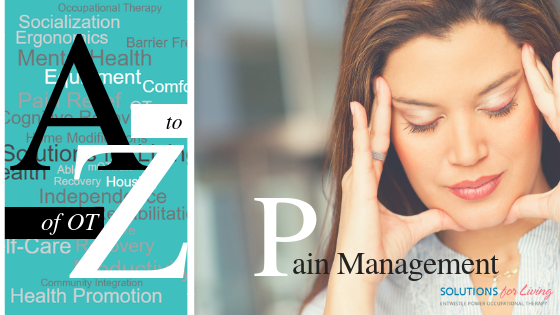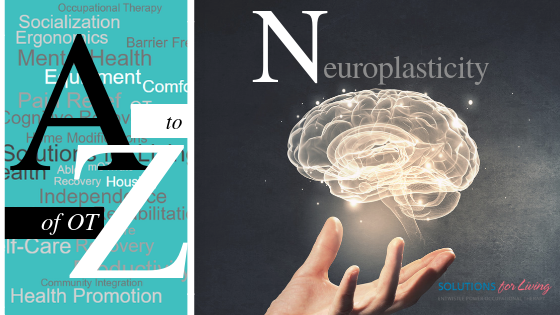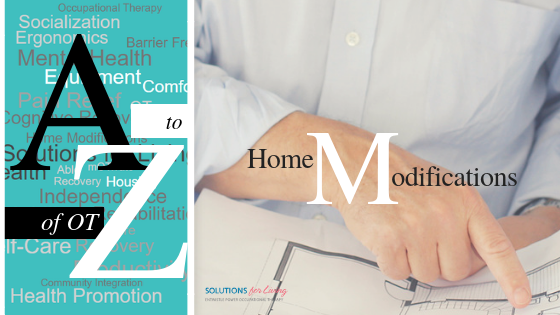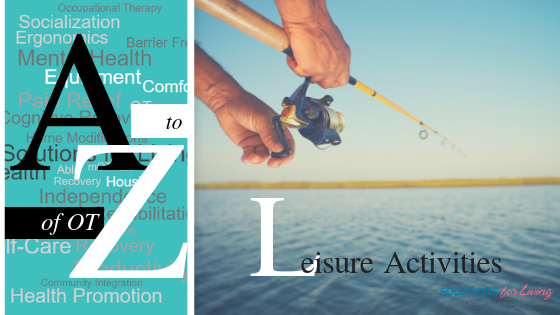Universal design is defined as, “the design of buildings, products or environments to make them accessible to all people, regardless of age, disability or other factors.” One major factor in achieving universal design is to create buildings and environments that are “barrier-free” and physically accessible for all. Occupational Therapists work with businesses and individuals to help design spaces, both public and private, that allow access for the greatest majority of people. Learn more in our post, A Practical Guide to Barrier Free Design.
October is Occupational Therapy Month and to celebrate we will be sharing a new series called the A to Z of OT. In our attempts to further educate the public about what Occupational Therapists do we will be highlighting twenty-six of the awesome ways OTs provide Solutions for Living.
We encourage you to follow along and to add to the discussion by highlighting other awesome things OTs help with for each corresponding letter!

